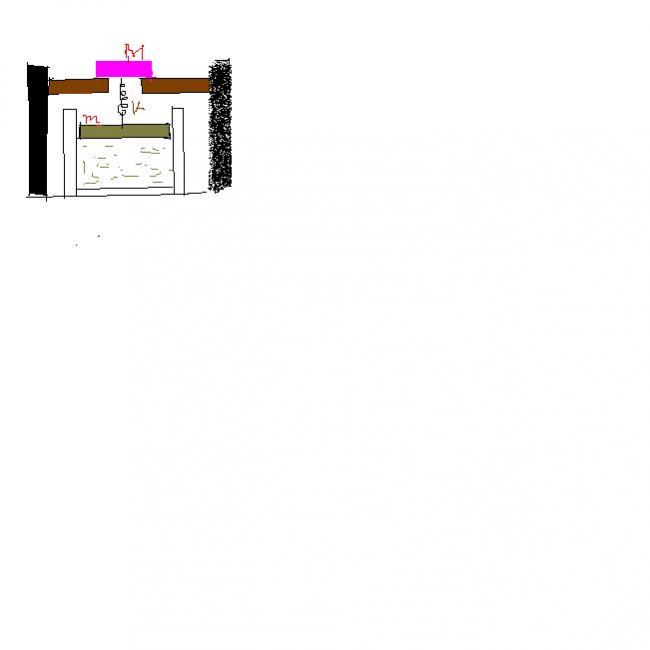sky, fig mein kya samjhaun? waise ab sirf ham dono hi hain!!

0.01 moles of an ideal diatomic gas is enclosed in an adiabatic cylinder of cross-sectional area A = 10 –4 m2. In the arrangement shown, a block of mass M = 0.8 kg is placed on a horizontal support, and another block of mass m = 1 kg is suspended from a spring of stiffness constant k = 16 N/m. Initially, the spring is relaxed and the volume of the gas is V = 1.4 X 10 –4 m 3 . Take atmospheric pressure Po = 10 5 Pa and g = 10 m/s2.
15. The initial pressure of the gas is
(a) 4 X 10 5 Pa
(b) 2 X 10 5 Pa
(c) 2 X 10 9 Pa
(d) None of these
16. If block m is gently pushed down and released it oscillates harmonically, its angular frequency is
(a) 12 rad/s
(b) 8 rad/s
(c) 6 rad/s
(d) None of these
m
M
k
-
UP 0 DOWN 1 0 7
 vishal akula please answer c also which is the heat to be supplied to gas so as to just lift the upper blockUpvote·0· Reply ·2018-11-01 23:56:59
vishal akula please answer c also which is the heat to be supplied to gas so as to just lift the upper blockUpvote·0· Reply ·2018-11-01 23:56:59
7 Answers
koi mujhe fig samjha de.. toh achha hai ...
i meant... fig acc to the question...
few more doubts
>> how to find the bouyance force of the gas ? [no rho of gas[2] ]
>> if not needed, then wat needed?
>> is the eqm equation:
Kx0 = mg + PATMA ??
initially spring is relaxed!!!!! so pressure is supporting only the block of mass m and atm pressr!!
so pressure due to block = 10/10^-4 = 10^5....pressure due to atm = 10^5.....
net 2*10^5!!!!!!!!!!!
for part 2................... 1st half of ossilation!!
PRESSURE at disp x is kx/A+mg/A + Po/A...................
V = Vint - Ax .......................
gas pressure pushin up............ P*V^gamma = P(INT)*Vint^gamma
................
PA-kx = mw^2 x.......
. find w .......... this is only for first half of ossilation ............... for second half it will be different as M mass wil go up....... im thinkin about it ill let u know[1]